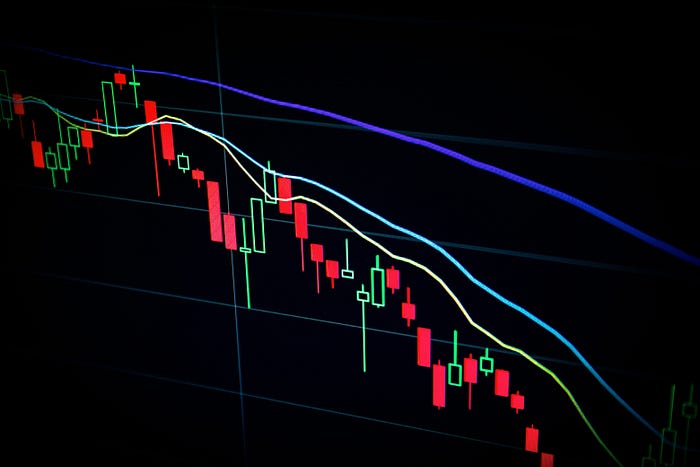Crypto’s Darwinian Moment
The projects and digital assets that adapt and survive the current market crisis, will evolve into the next breed of resilient crypto businesses.

It was only a year ago that crypto internet and social media were plastered with “to the moon” memes, exchanges were launching glossy ads and naming stadiums, and mainstream media was giddy with coverage of crypto’s booming 3 trillion-dollar market that kept only going up.
At the peak of the euphoria, retail investors were racing to crypto exchanges and buying digital tokens they knew nothing about, egged on by word-of-mouth, social media, and influencers. Crypto companies with weak - even non-existent - business models were getting funded by cash-rich VCs and launching tokens indiscriminately (10,000+ crypto tokens were launched between 2019–2021). Meanwhile, hedge funds and crypto lenders were getting deeply overleveraged in chasing unrealistic growth targets and yields.
As I have written in my previous article on looking beyond crypto's cluttered market, a big part of this maverick growth was fuelled by cheap capital arising from massive money printing, and the misguided narrative that crypto is a ‘get rich quick’ money-making opportunity. As a result, crypto attracted all manner of market participants - good, bad, and inexperienced - in droves.
Then the party stopped!
Russia invaded Ukraine. Global food and fuel supply chains were disrupted. Gas prices skyrocketed and inflation hit a 30-year high. Central banks started sharply increasing interest rates. The global economy spiralled into a recession and triggered massive selloffs in both the equity and crypto markets.

In a matter of months, we went from a frothy crypto run to suddenly being in a masive bear market with everyone preserving cash flow and preparing for an extended crypto winter.
Crypto markets are global and run 24X7 which makes them highly interconnected and volatile. Once the impact of global economic conditions hit crypto markets, within a matter of days, we saw the meltdown of overleveraged big players starting with Terraform Labs, Three Arrows Capital, and Celsius. Even now, more dominoes continue to topple from these fallouts.
The moment crypto market stopped being a ‘get rich quick’ scheme, opportunistic investors, worthless meme tokens and Ponzi schemes with unrealistic yields started vanishing as well. Only those entrepreneurs and investors who are dedicated to creating long-term value in crypto and believe in the transformative potential of blockchain technology remain standing.
Market conditions and the purging of risky businesses aside, the outlook for digital assets and blockchain has never been better. Companies and projects with strong business fundamentals are becoming even more resilient. They are using this slow period to focus and build the next generation of amazing products that will power Web3 and digital economy of the future.
During the dot com crash in 2000, thousands of weak companies vanished without a trace, while some of the most notable digital businesses (Amazon, Google, Facebook, etc.) were either conceived during this time or gained from the adversity and become stronger.
The same will happen with crypto during this downturn.
Two different types of adaptive strategies, metaphorically like the lotus and cactus plants, will emerge to ensure ‘survival of the fittest’ in these hostile market conditions.
The lotus plant takes the waste of a swamp and creates a beautiful fragrant flower from it. Many enterprising entrepreneurs and builders will pick up pieces of failed crypto projects and transform them into better, and more valuable digital assets of the future.
The biggest precedent here is of Bitcoin itself, which was created in 2008 by improving upon failed digital money initiatives of the past such as B-Money, DigiCash and HashCash.

The cactus plant conserves critical resources and adapts to survive in the harshest conditions. Resilient crypto projects and companies will pivot quickly, adjust their strategies, conserve capital, manage risk and continue building value in their business and products. They will be ready for the market when it starts going up again.
Some of the oldest and most valuable cryptos like Ripple, Ethereum and Aave have adapted, changed, and even grown stronger through numerous crypto market cycles in the past 10 years.

Another existential sword that has been hanging over the crypto industry’s neck for the past several years is government regulation. After all, what’s the point of surviving a market downturn, if the regulators will ensure your demise in the end anyway.
Fortunately, there is changing sentiment about digital assets and a growing realization by government agencies around the world that crypto is here to stay. So instead of ignoring the industry, they have started to actively engage with it and are working on providing much-needed regulatory and operating frameworks that businesses and consumers are asking for.
A lot of positive progress has been made in the EU (Markets in Crypto Assets — MiCA) and in the US (President’s Executive Order & the Bipartisan Responsible Financial Innovation Act), with more clarity expected through the remainder of 2022 and into 2023.
Once regulatory guidance is established, it will bring huge confidence in crypto assets for both retail and institutions.

As an eternal optimist, I believe market conditions will eventually improve, as they always do in any down cycle. By then, if we have a regulatory framework that nurtures innovation, we could very well see the perfect conditions that nurture a beautiful bloom for the crypto lotuses and cactuses that manage to survive these harsh times.